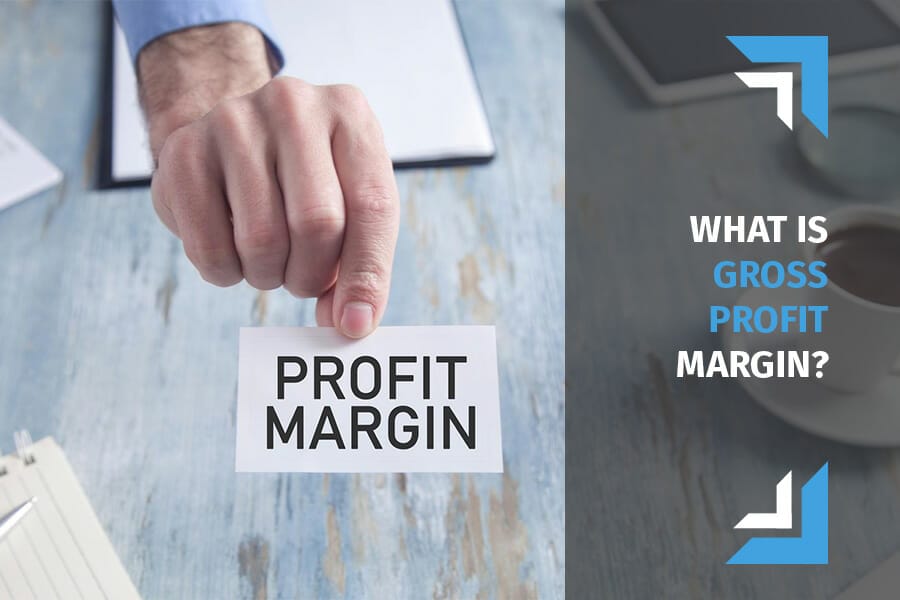
Gross profit margin is one of the most important business metrics for owners of product-centric businesses. It looks specifically at the business sales and variable costs – also known as the cost of goods sold.
The aim is to assess ‘if the business sold one more product, how much extra would this cost.’ For example, if the gross profit margin was 30%, the company would know that for every $100 worth of sales, there they would make $30 of gross profit, hence the variable costs would be $70.
The gross profit is different from the net profit which also includes fixed costs. Therefore, this margin is far more relevant to product-centric businesses than service-based businesses.
How do you calculate Gross Profit Margin?
The gross profit is the total sales minus the cost of goods sold. Thus, the formula for gross profit margin percentage is calculated as:
| Total Sales Income – Cost of Goods Sold | x | 100 |
| Total Sales Income |
The total sales income – also called total sales revenue – is the sum of all sales the business has made. This figure must exclude any additional income such as government grant support, interest, or income from another business (such as rental income from an investment property).
The cost of goods sold is any variable cost to the business that directly increases or decreases as the business makes more or fewer sales.
By calculating the gross profit as a margin, business owners can compare their results against others in the industry.
Why should a business compare gross profit margin to competitors?
Analysing the gross profit margin against industry competitors allows business owners to review their pricing strategy. A low margin may indicate the business is spending too much on variable costs, or they are not charging enough for the product. However, a high gross profit margin may show there is an opportunity to lower prices in pursuit of increased sales volume.
However, it is only when comparing to similar businesses in the same industry that a business owner can really see how well their business is performing. There is no ‘set’ result for a ‘good profit margin’ as they can vary significantly between industries.
Although this is an important margin, it should be viewed in conjunction with the net profit margin to ensure costs are correctly allocated. To really dive into gross profit margins, it is also worth undertaking an industry analysis and detailed competitor pricing analysis to see where the best business opportunities are.
Gross profit margins also vary heavily between product-based industries. Especially in industries where products can also include paid services such as construction or hospitality.
Note: to determine your Industry, you can check out our Industry List or view the ANZSIC search tool on the ABS website.
What can I do to improve the gross profit margin results?
The following list highlights 5 things a business owner can do to improve their gross profit margin:
1. Increase prices: increasing prices will immediately lead to improved gross profit margins; however, this needs to be heavily considered. Before raising prices, the business needs to understand if customers are happy to pay for the increase. This can be done by undertaking a competitor pricing analysis and market analysis to understand how a price increase would impact sales.
2. Renegotiate cost inputs with suppliers: renegotiating lower cost input prices, or searching for new suppliers with cheaper pricing, can be a quick way to improve gross profit margins without increasing the sales price or changing the product.
3. Analyse individual product gross profit margins: for businesses with many products, it can be worth running an analysis to review the most and least profitable products. Based on this information, businesses can begin to cull – or change – some of the least profitable products and push those with higher margins.
4. Substitute inputs for cheaper alternatives: substituting some costs may help to alleviate high-cost burdens. However, this could change a product substantially so should be considered in detail.
5. Reconsider your pricing strategy: if the business packages products or undertakes mass discounting, this could impact the gross profit margin greatly. However, for firms with a high margin, they can consider promotions to drive sales volume and seek to increase the overall net profits.
If you’re an accountant or business advisor, you can test our platform for free and run a Business Benchmark Report for one of your clients.
